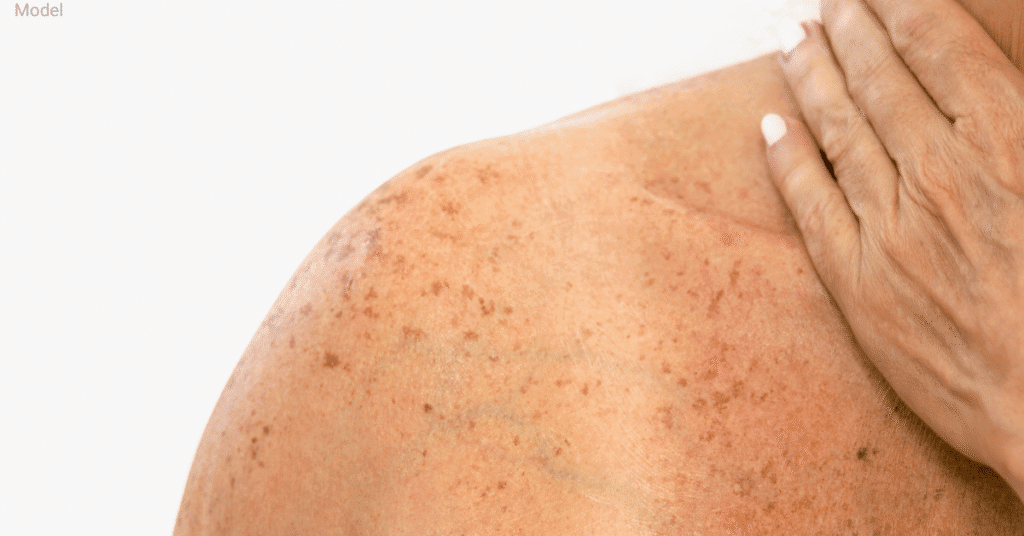Sun exposure can lead to skin damage, including hyperpigmentation, especially if you have acne. While certain ingredients can help reverse this damage, you must also take steps to limit sun exposure and wear sunscreen consistently. Here’s how to effectively reverse sun damage and prevent further harm:
Three Rules for Dark Spots
- Prevention
- Reversal
- Product Check
Sun Exposure and Skin Risks
Sun exposure is one of the leading causes of visible skin aging, such as fine lines and age spots. In fact, up to 80% of visible aging is caused by UV rays, not just the natural aging process. Dr. David Lortscher, a board-certified dermatologist and founder of Curology, emphasizes that without proper sun protection, treating age spots and other forms of hyperpigmentation will be futile.
The Post-Acne, Sun Survival Guide
To protect your skin from sun damage and hyperpigmentation, follow these key rules:
- Use Broad-Spectrum Sunscreen Daily
Up to 95% of UV rays reaching Earth are UVA, which can cause long-term damage. Broad-spectrum sunscreen protects against both UVA and UVB rays. Apply sunscreen daily, even on cloudy days, and ensure it’s at least SPF 30. Dr. Lortscher recommends using 1/4 teaspoon of sunscreen on your face to get the full benefit of the SPF rating. - Protect Your Skin from Acne Hyperpigmentation
Sun exposure can worsen acne scars. It’s important to protect your skin from further damage by using sunscreen regularly. Avoid direct sun exposure, especially between 10 a.m. and 2 p.m. when UV rays are strongest. - Check Ingredients for Photosensitivity
Some ingredients that fade dark spots, such as retinoids and AHAs, can make your skin more sensitive to the sun. Be cautious and apply these products only at night. Always follow up with sunscreen during the day.
Sun Damage Goes Beyond Burns
Sun damage is cumulative and affects your skin deep below the surface. It’s not just about burns; prolonged exposure can lead to wrinkles, loss of elasticity, and even increase your risk of skin cancer. Artificial tanning is also a known carcinogen. Protecting your skin now can prevent irreversible damage later.
1. Use Sunscreen to Protect Yourself Without Avoiding the Outdoors
As UVA rays can penetrate through clouds and glass, it’s essential to wear sunscreen every day, regardless of the weather. To effectively shield yourself, apply a broad-spectrum sunscreen of at least SPF 30. If you’re concerned about vitamin D levels, talk to your doctor about supplements to avoid the risk of skin cancer.
2. Use These Ingredients to Reverse Sun Damage

While prevention is the easiest route, reversing sun damage is possible with consistent use of certain ingredients. However, remember that you need to prioritize sun protection first. Here are some star ingredients:
- Niacinamide: This ingredient helps fade dark spots, reduce fine lines, and improve skin elasticity. It blocks pigment production and improves the skin’s barrier. Niacinamide is widely available in serums and moisturizers.
Try: SkinCeuticals B3 Metacell Renewal, Paula’s Choice Niacinamide 10%. - Azelaic Acid: This FDA-approved ingredient reduces hyperpigmentation caused by acne and sun exposure. It also has anti-inflammatory properties and is gentler than tretinoin.
Try: Curology, Finacea 15% gel, Azelex 20% cream. - Topical Retinoids (Retinol/Tretinoin): Vitamin A derivatives promote cell turnover and fade pigmentation. Retinol is less potent than tretinoin, but both can improve skin texture.
Try: InstaNaturals Retinol Serum, Curology custom formulas. - Vitamin C: A powerful antioxidant, Vitamin C neutralizes free radicals, repairs skin, and stimulates collagen production, preventing future damage.
Try: Paula’s Choice Resist C15 Super Booster, Timeless Skin Care 20% Vitamin C. - Alpha Hydroxy Acids (AHAs): AHAs, such as glycolic acid, can improve skin texture and fade hyperpigmentation. They work best when applied in the evening, followed by sunscreen in the morning.
Try: Paula’s Choice 8% AHA, COSRX AHA 7 Whitehead Power Liquid.
3. Cross-Check the Ingredients in Your Skincare Routine
If you’re still dealing with dark spots, review your skincare ingredients carefully. Some treatments for acne scars or sun damage can make your skin more sensitive to the sun, leading to further discoloration. Pay special attention if you’re using topical treatments like glycolic acid or retinoids, as well as oral acne medications like doxycycline or isotretinoin (Accutane).
When to Use Products Safely
- Avoid Photosensitizing Ingredients in the Day:
Ingredients like retinoids and AHAs should be applied at night, as they increase sun sensitivity. Always use sunscreen during the day, even if you’re using these products at night. - Daytime Ingredients:
Vitamin C, azelaic acid, and salicylic acid (BHAs) can be safely used during the day. These ingredients don’t increase sun sensitivity, but still, sunscreen is a must.
Why Protecting Your Skin Is Crucial
Understanding why sun protection is essential is key to maintaining healthy skin. UV rays not only cause visible damage, such as wrinkles and age spots, but they can also suppress your immune system, increasing the risk of skin cancer. UVA rays penetrate deeply into the skin, causing long-term damage, while UVB rays burn the skin. Both contribute to skin aging and cancer risk.
By following the steps outlined above—prevention, product use, and careful ingredient selection—you can effectively manage and reverse sun damage, keeping your skin healthier for longer.
Also Read : Best Night Creams for Deep Wrinkles: Wake Up to Smoother Skin!



